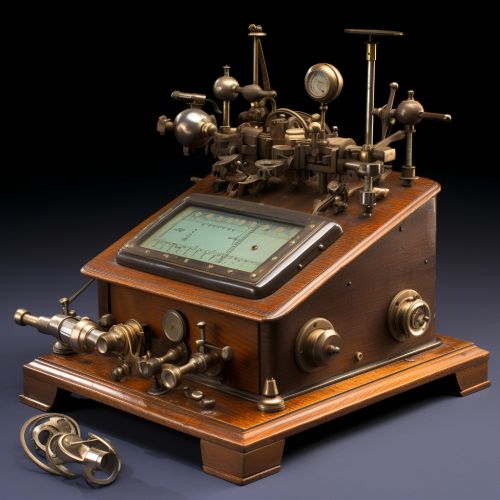Wireless telegraphy
Introduction
Wireless telegraphy refers to the transmission of telegraphy signals without the use of wires. This technology, which emerged in the late 19th century, has played a significant role in the development of modern communication systems. The term is often used interchangeably with radio, although there are distinct differences between the two.


History
The concept of wireless telegraphy was first proposed by James Clerk Maxwell and later demonstrated by Heinrich Hertz. However, it was Guglielmo Marconi who successfully developed a practical wireless telegraphy system in the late 19th century. Marconi's system, which used electromagnetic waves, revolutionized global communication and laid the foundation for the development of radio broadcasting.
Principles of Operation
Wireless telegraphy operates on the principle of electromagnetic radiation. When an electrical signal is applied to an antenna, it generates electromagnetic waves that propagate through space. These waves can be detected by a receiving antenna and converted back into an electrical signal.
Types of Wireless Telegraphy
There are several types of wireless telegraphy, including spark-gap telegraphy, continuous wave (CW) telegraphy, and frequency shift keying (FSK) telegraphy. Each type has its own unique characteristics and applications.
Spark-Gap Telegraphy
Spark-gap telegraphy was the first type of wireless telegraphy to be developed. It involves the use of a spark-gap transmitter, which generates electromagnetic waves by creating a spark between two electrodes.
Continuous Wave (CW) Telegraphy
Continuous wave telegraphy, also known as on-off keying (OOK), involves the use of a continuous wave signal that is turned on and off to represent the telegraphy signals. This type of telegraphy is commonly used in Morse code communication.
Frequency Shift Keying (FSK) Telegraphy
Frequency shift keying telegraphy involves the use of a carrier wave whose frequency is altered to represent the telegraphy signals. This type of telegraphy is commonly used in digital communication systems.
Applications
Wireless telegraphy has been used in a wide range of applications, from maritime communication to broadcasting. It played a crucial role in the development of modern communication systems, including radio, television, and the internet.
